Yazd is a storied city. This millennia-old settlement lies on an outcrop 1,200 meters above sea level, overlooking a desert plain, kept alive by long ago harnessing tunnels through the earth to bring water safety to its citizens.
It is the last bastion of Zoroastrianism, the ancient Persian faith, and features many fire temples and examples of the old religion. Boasting the oldest earthen buildings in the world, numerous mosques, and examples of ancient architecture, this desert town is one of the most fascinating in the whole country and well worth your time.
Table of Contents
A Guide to Yazd, Iran
History of Yazd
According to archaeological evidence, people have been living in and around Yazd since around 550 BC. The settlement started to grow in importance under the Sassanid Empire (224-651), also known as the Empire of the Iranians. Under Yazdegerd I, the King of Kings of Iran, between 399 and 420, a number of monumental public works took place, including a mint, indicating the growing prominence of the city.
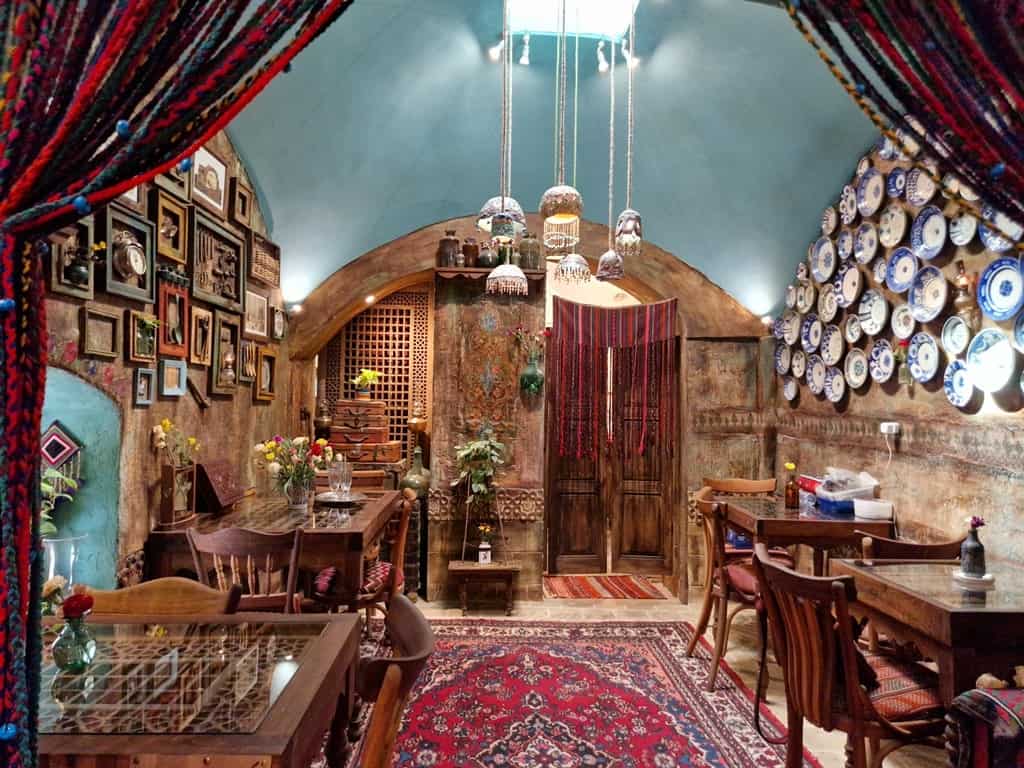
Following the Muslim conquest of Persia in 633, a growing number of Zoroastrians from across the region began filing into Yazd. Though conquered by Muslim forces, Yazd was able to hold onto its Zoroastrian identity by paying a levy to the Islamic rulers.
Its remote location, surrounded by desert, gave it some protection from war and conflict, and so it became a haven for those fleeing religious persecution and the onslaught of invading Mongols in the 13th century.
Marco Polo even wrote about Yazd in 1272, noting that it had a fine silk-weaving industry: “It is a good and noble city, and has a great amount of trade….”
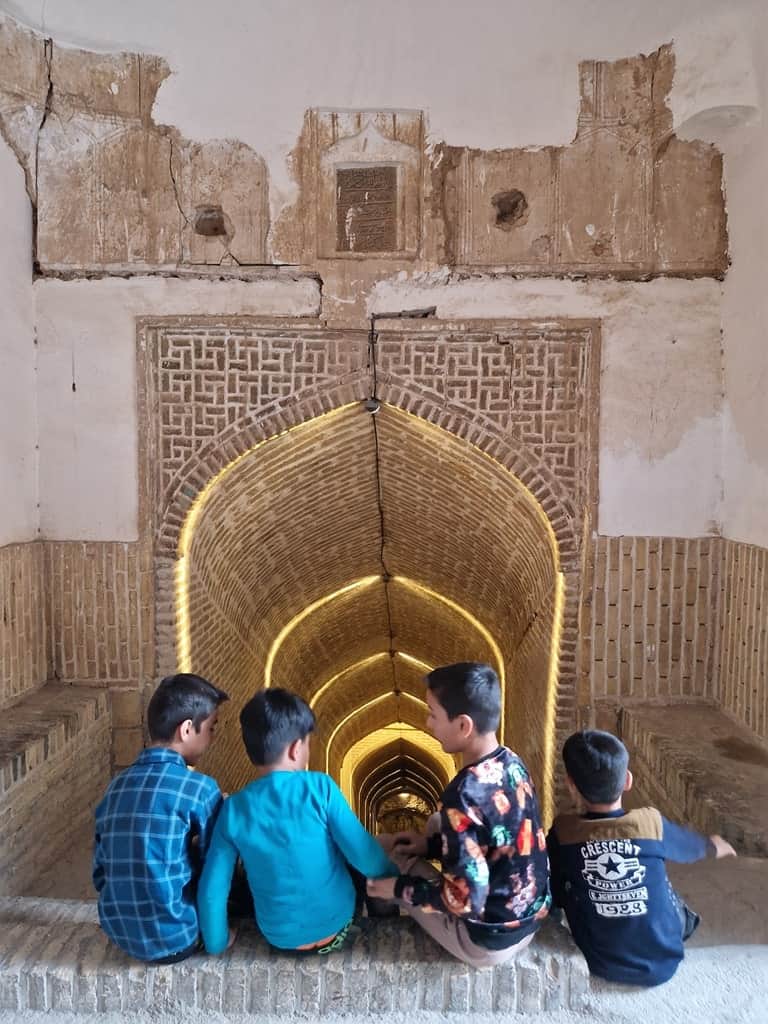
In the 14th century, Yazd served as the capital of the Muzaffarid dynasty; many buildings still standing today, such as the Friday Mosque, date from this prosperous period of its history. Everywhere, visitors can still see the remains of this once crucial town of the Silk Road, including medieval and a number of UNESCO-recognized mosques and mausoleums.
Where to stay in Yazd
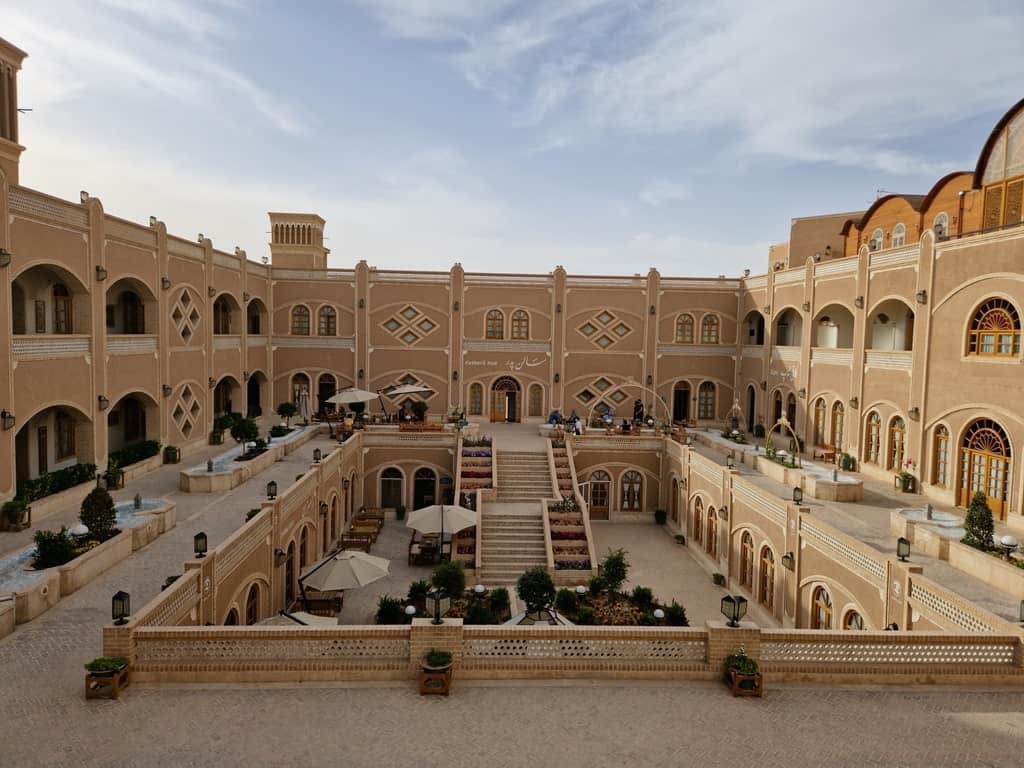
Dad Hotel Yazd: This gleaming 4-star hotel has an illustrious history, first starting life in 1928. Its large courtyards shared spaces, and 88 guest rooms received an update in 2007, giving this storied hotel a new lease on life. Amenities at this polished accommodation option include an underground pool, spa, and massage services, plus two restaurants, one of which features a gorgeous terrace.
How to get around Yazd
On foot: Thanks to Yazd being a fairly compact city, many of the top sights — particularly in the Old Town — are within an easy walk from each other.
By taxi: Taxis are numerous in Yazd. Make sure to agree on a price beforehand to avoid being surprised by a large amount when you get to your destination. If you have an Iranian sim card, then you can also use Uber-like apps such as Snapp, the first ride-hailing app in Iran.
Things to do in Yazd, Iran
Zoroastrian Fire Temple of Yazd
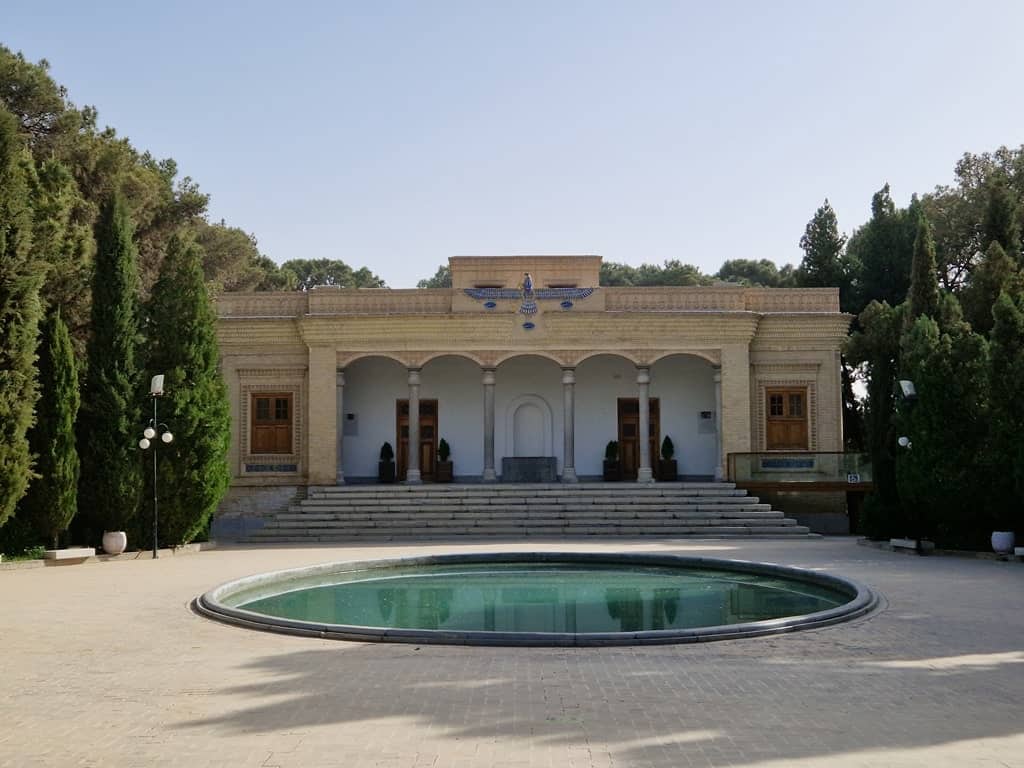
Close to the center of the old city sits this old temple of the Zoroastrian religion. It’s here that you’ll find the location of Behram Fire, a sacred flame that’s been burning since 740. This is one of nine Atash Behram flames, which are the highest holy fires in the Zoroastrian faith.
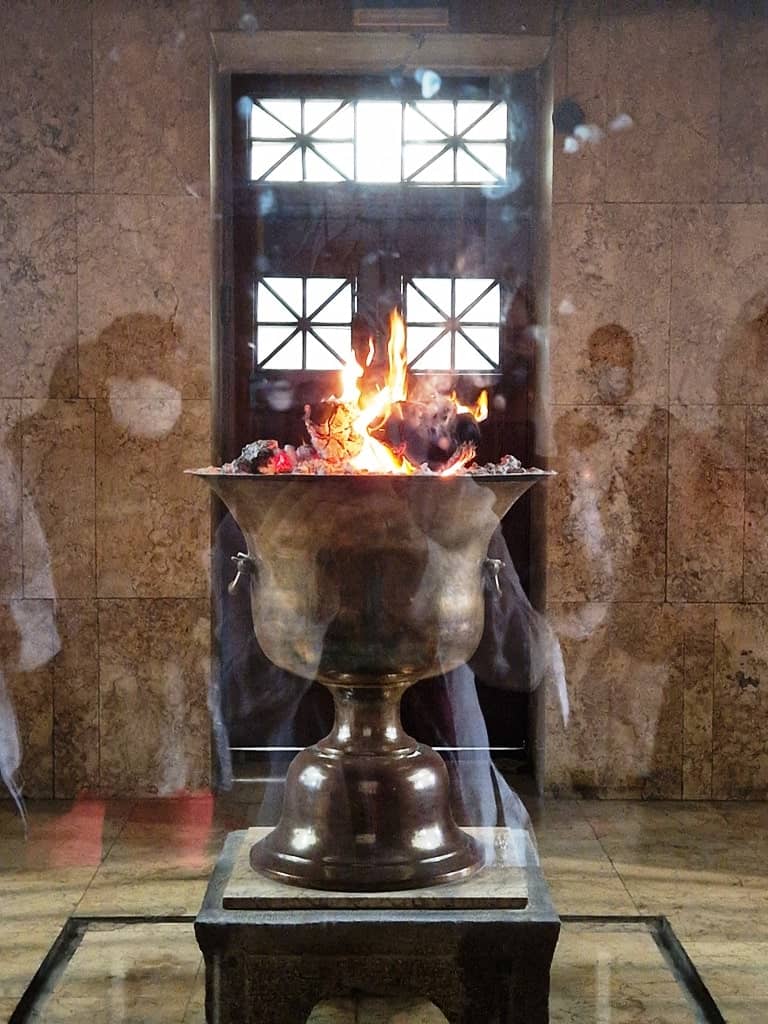
The flame first flickered into light in the Pars Karyam Fire Temple and then was taken to the city of Aqda, which was its home for 700 years. Finally, it reached its current location in 1934. Today visitors can see the flame burning bright in a bronze urn, protected by glass, inside the purpose-built brick temple.
Amir Chakhmaq complex
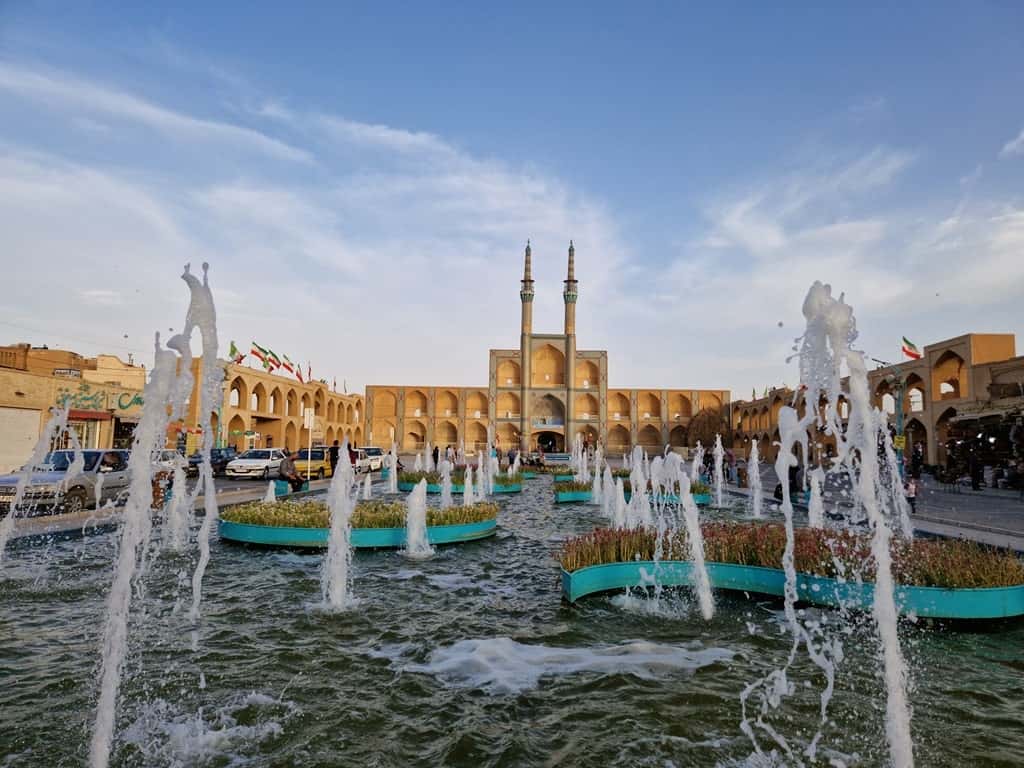
This mosque, and the square of the same name in which it is located, is one of the symbols of Yazd. Dating back to the 15th century (it was completed in 1438), the complex takes its name from the governor of the city during the Mongol Timurid dynasty.
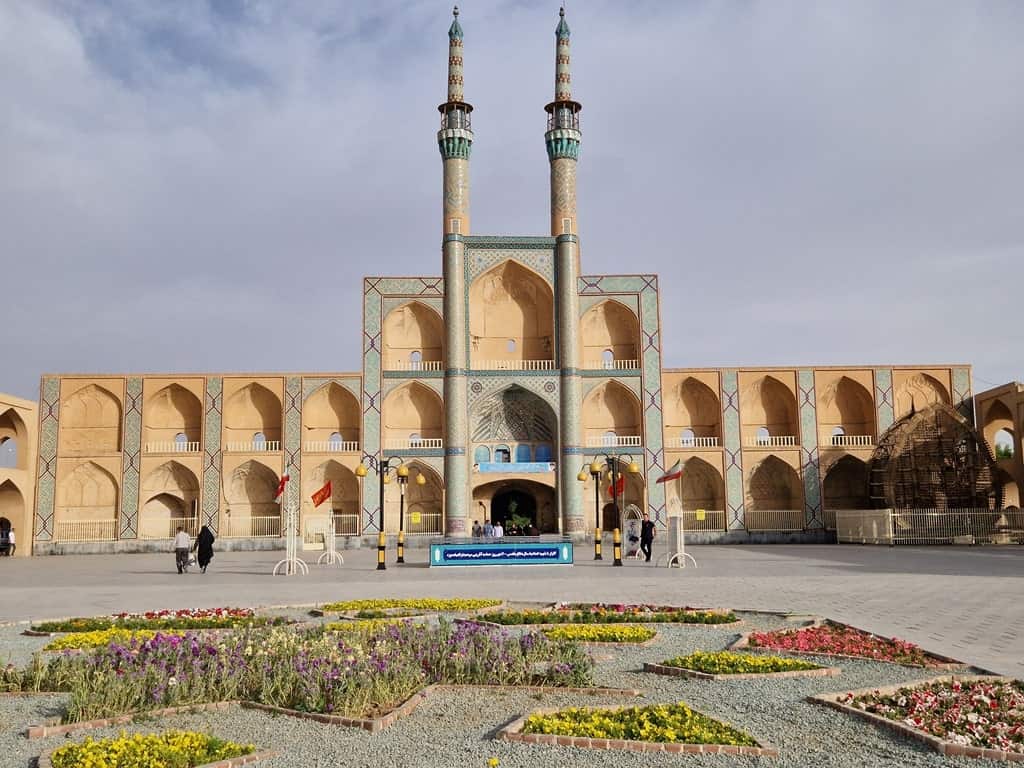
Set at the center of the historic city; it’s hard not to be impressed by the deceptive simplicity of this mosque’s symmetrical design. The sunken arch alcoves look particularly impressive when they are illuminated after dark.
Watch Saheb A Zaman Zurkhaneh
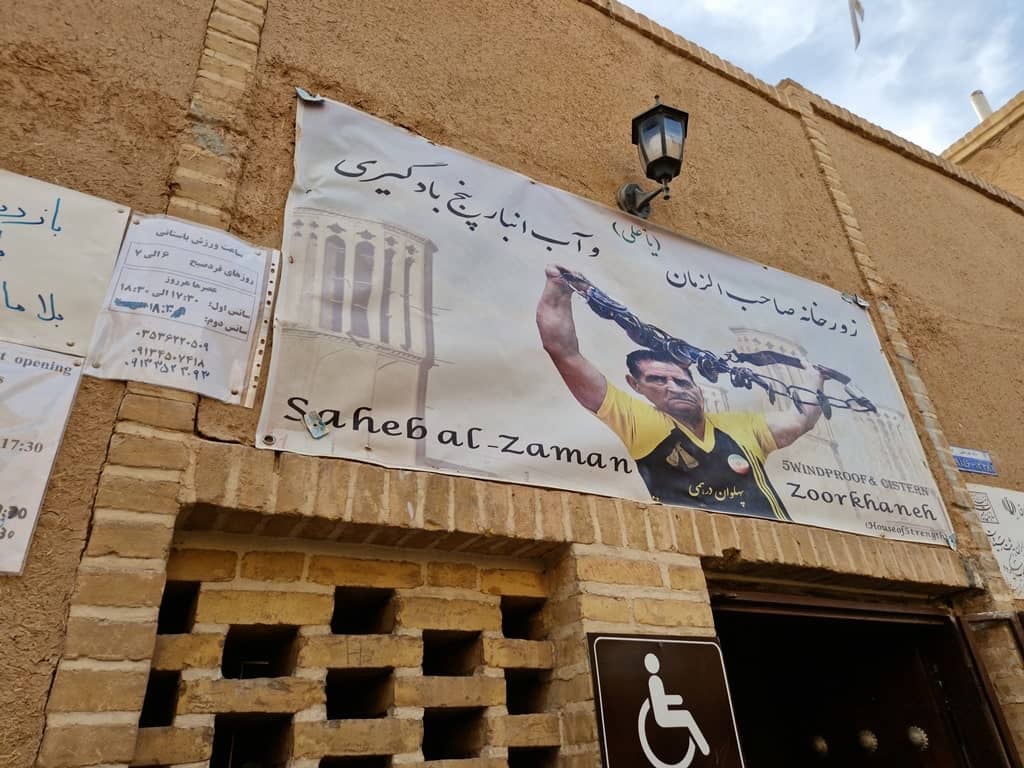
This former ab anbar (water reservoir) was once an important building for the clean supply of water to Yazd. Built-in 1580, the 29-meter curved structure is no longer for the supply of water — due to the onset of modern irrigation systems — but is no less impressive to visit. Not least because of the new lease on life, it has been found as Saheb A Zaman Zurkhaneh.
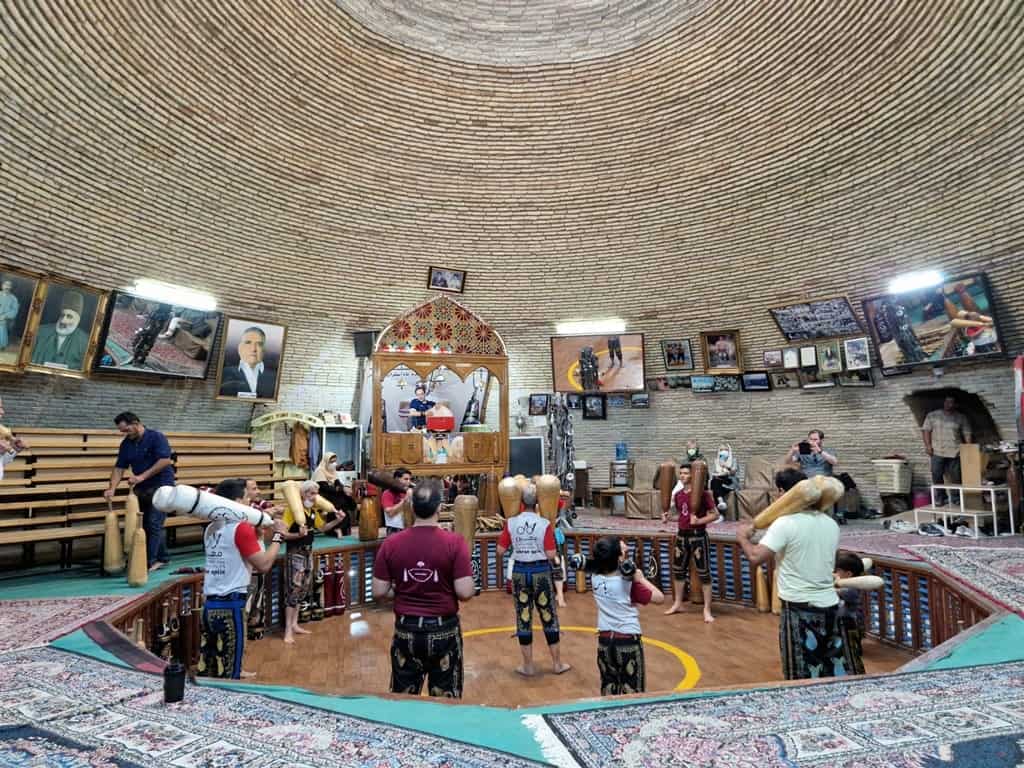
A zurkhaneh (literally “house of strength”) is a place where javan mard (gentlemen) build strength by using heavy wooden clubs, which are sort of like kettlebells.
This sumo-esque sport is accompanied by drums to keep the Javan mard in rhythm as they train. Chivalry and integrity are key attributes of the participants, and it’s possible for you to watch them; audiences may sit around the exercise area (provided they remove their shoes).
Towers of Silence
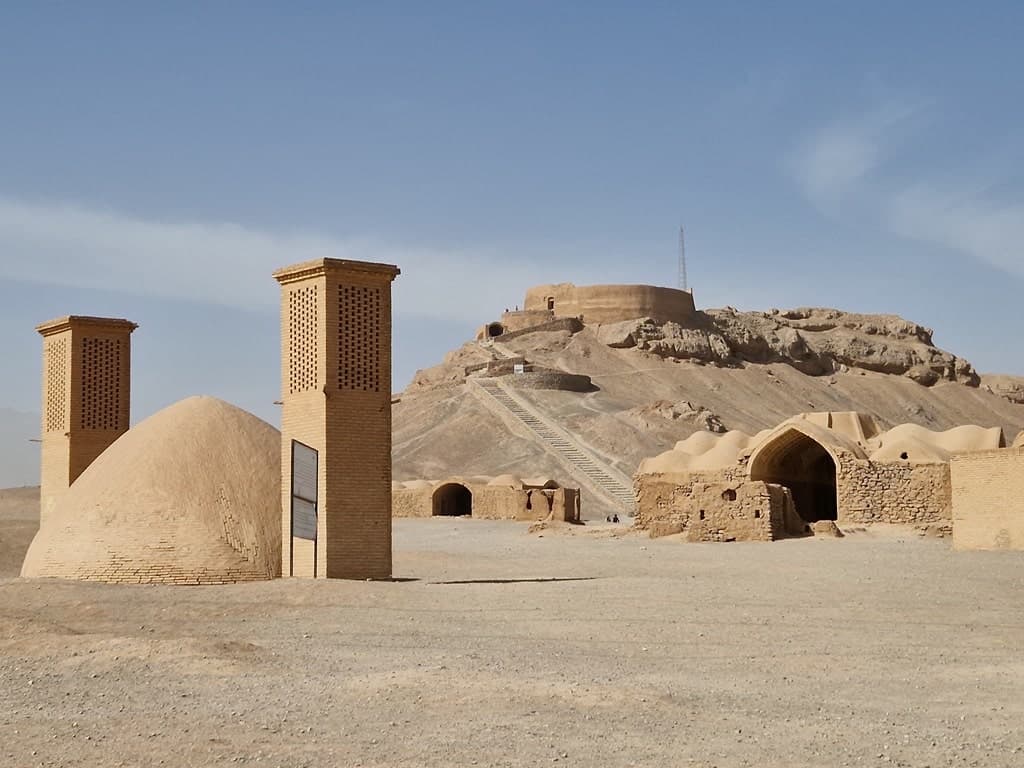
Called Yazd Dakhma in Persian, the Yazd’s Towers of Silence are located around 15 kilometers southeast of the city. Dakhma are essentially ceremonial structures used by Zoroastrians as part of the faith’s funeral rites. The bodies of the deceased are placed in a ostudan (a type of pit) atop these towers so that the holy elements of earth, fire, and water and not polluted by the decomposition of the dead body.
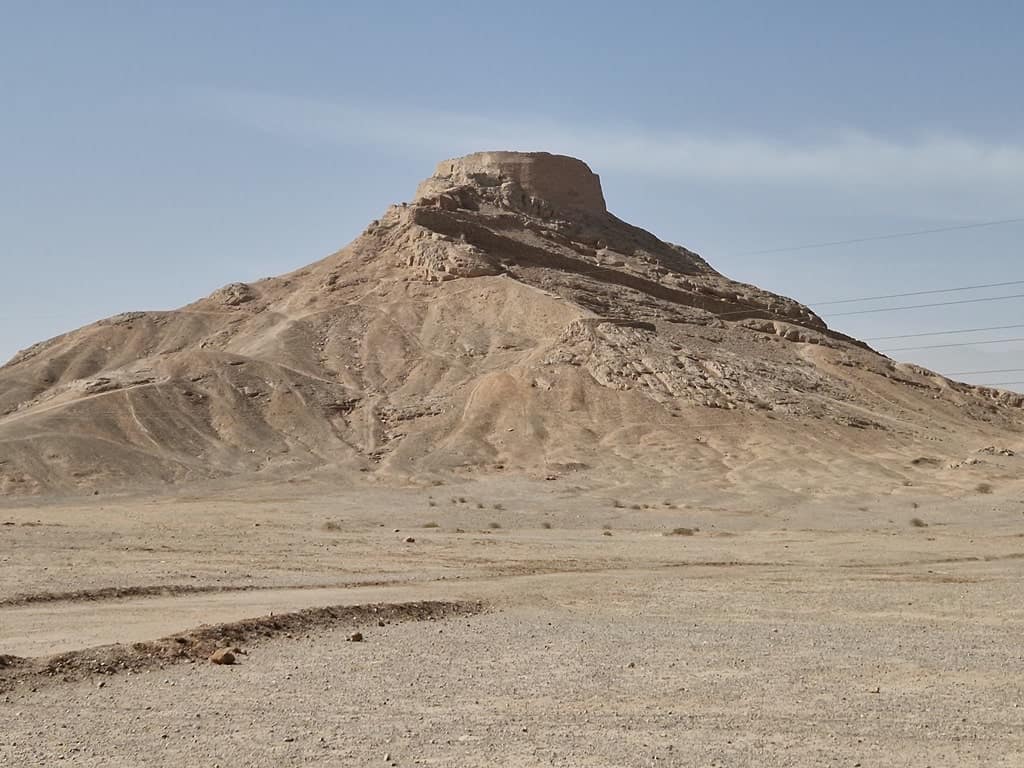
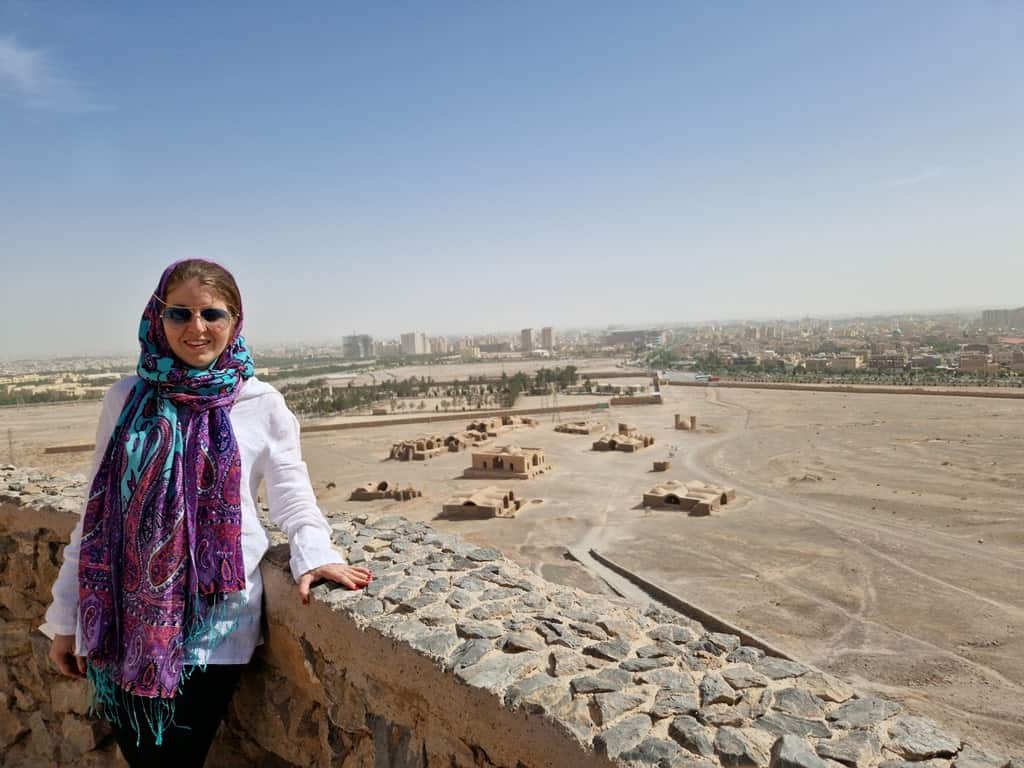
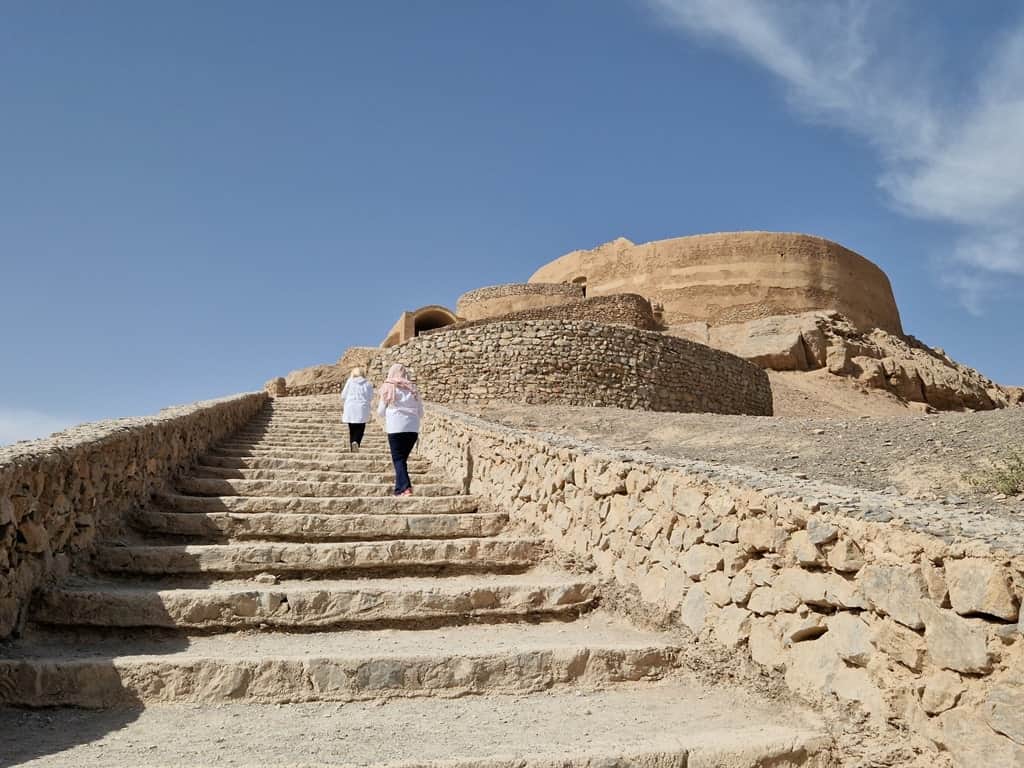
Instead, the body is gradually decomposed over time, not only by the weather but mainly by carrion birds like crows and vultures, who strip the body to its skeleton. Though this cultural practice has been banned in Iran since the 1960s, these two striking structures remain, sitting on hilltops as a reminder of the country’s unique religious past.
Old Town of Yazd
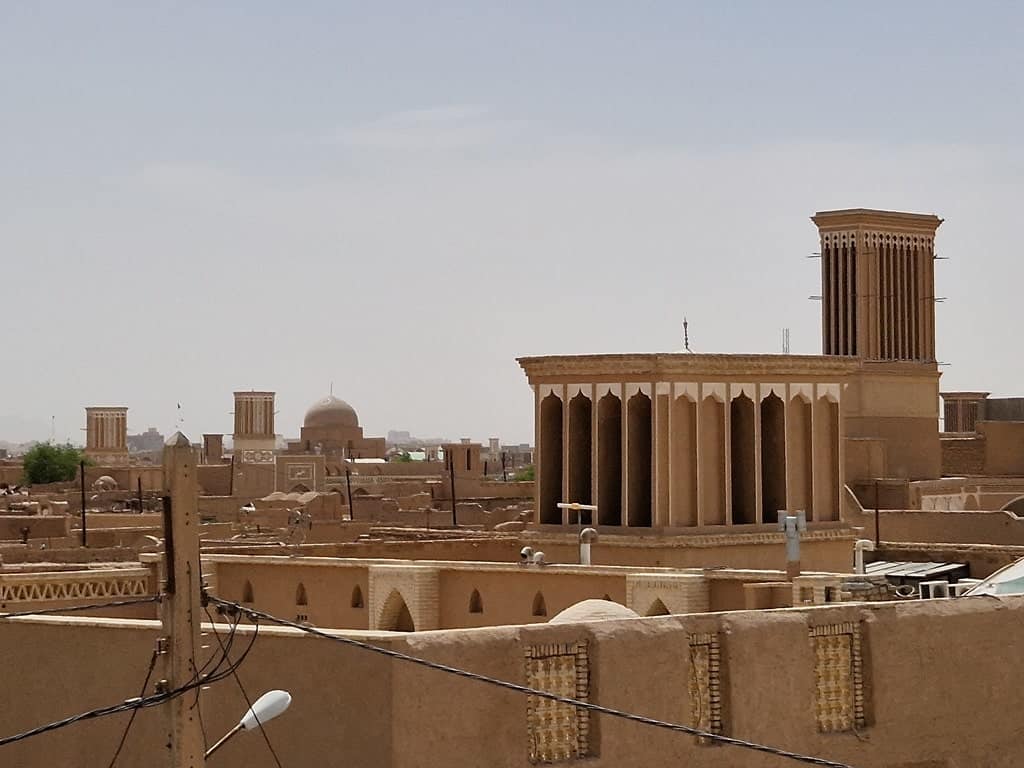
The Old Town of Yazd offers up an intriguing treasure trove of historic dwellings and monuments to marvel at. Listed as a UNESCO World Heritage Site, this slice of the Iranian city is often touted to be the oldest city in the world.
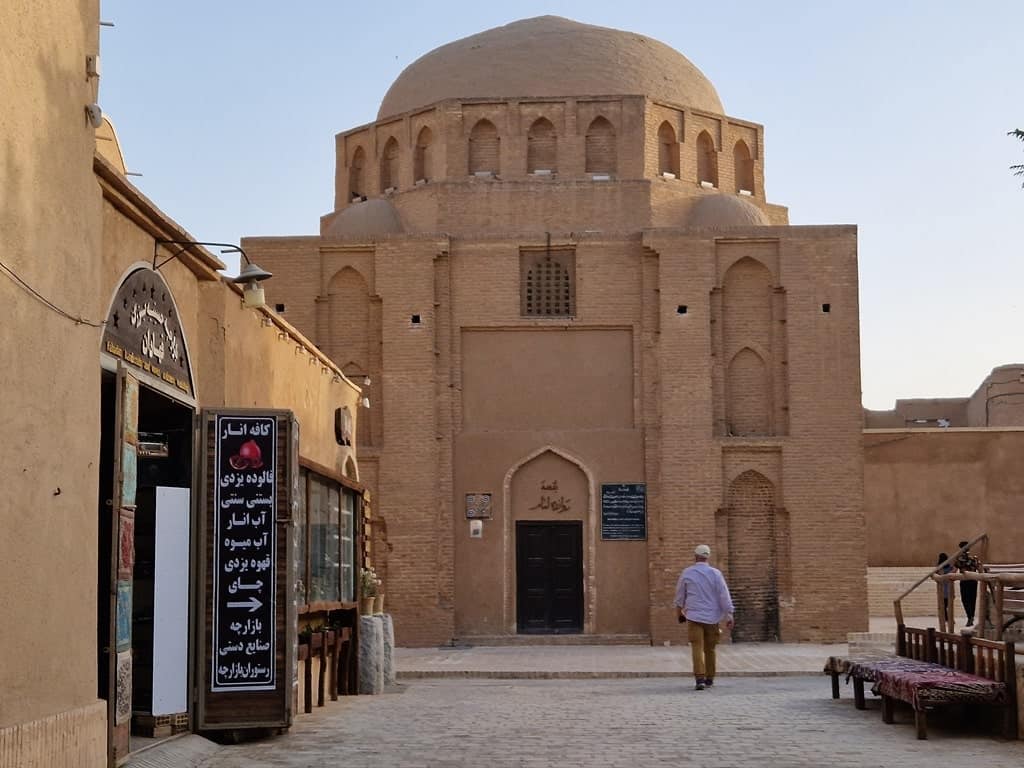
Built out of earthen architecture, it has retained many of the architectural elements and much of the character and amenities that would have existed in Yazd for centuries.
These include historic hammams, badgir (windcatchers), tea houses, mosques, Zoroastrian temples, and even several synagogues. In short, don’t miss out: It’s like stepping into another world.
Jameh Mosque (Blue Mosque)
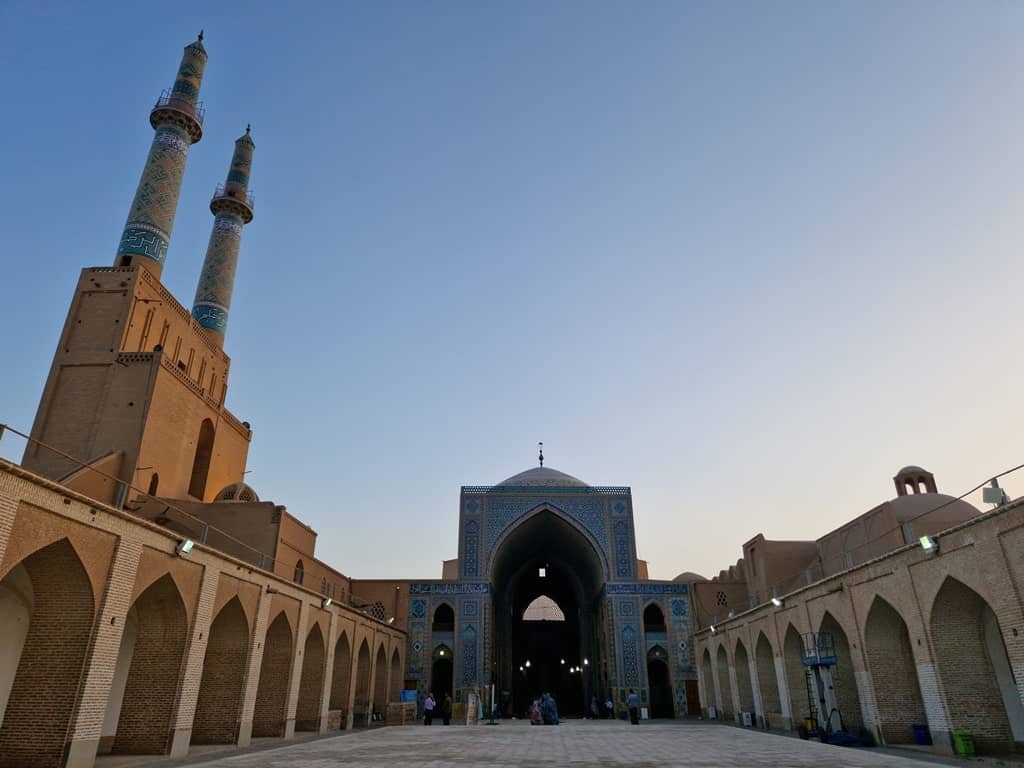
Informally known as the Blue Mosque, the Jameh Mosque — or Masjed-e Jameh — was built in the 15th century for Shah Sayyed Roknaddin on the site of a former 12th-century fire temple. The enormous religious structure is topped by two 48-meter-tall minarets, resplendent with inscriptions, but the showstopper here is the mosaicked dome and mihrab (a niche indicating the direction of Mecca).
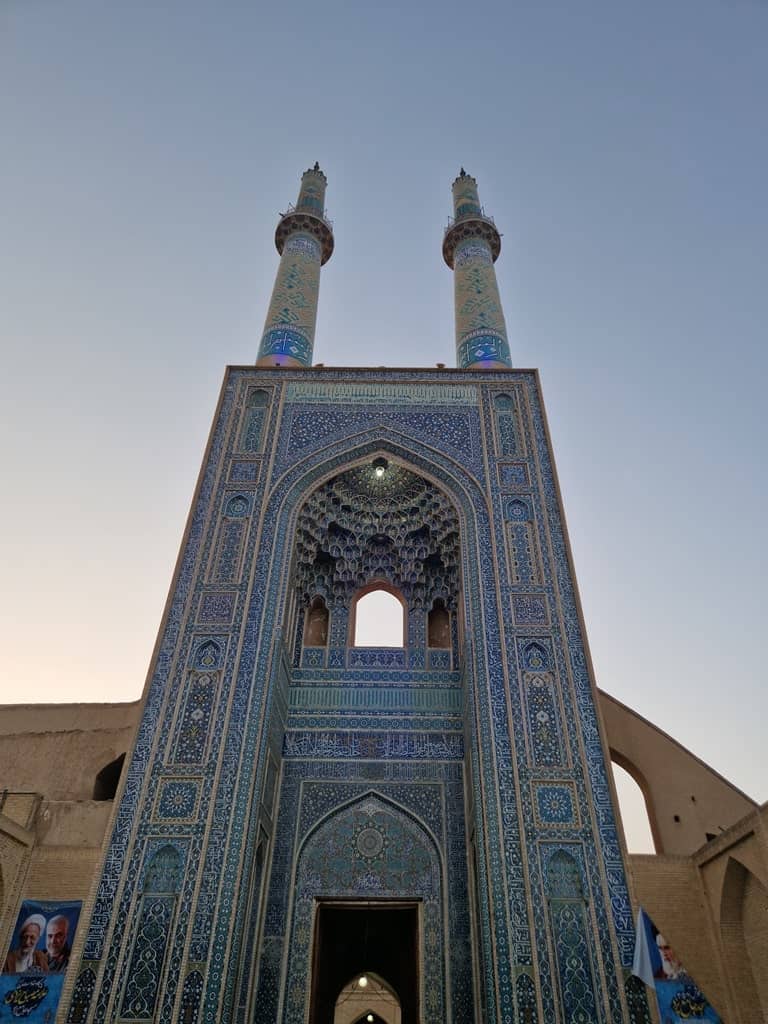
This type of mosaic tiling is called faience, by which each singular tile is decorated with various painted designs. In the case of the dome, these individual pieces — like parts of a giant jigsaw — spell out holy names in a mesmerizing script. To fully understand the ideas behind this architectural gem and the Arabic calligraphy, a guide is recommended.
Dowlat Abad Garden
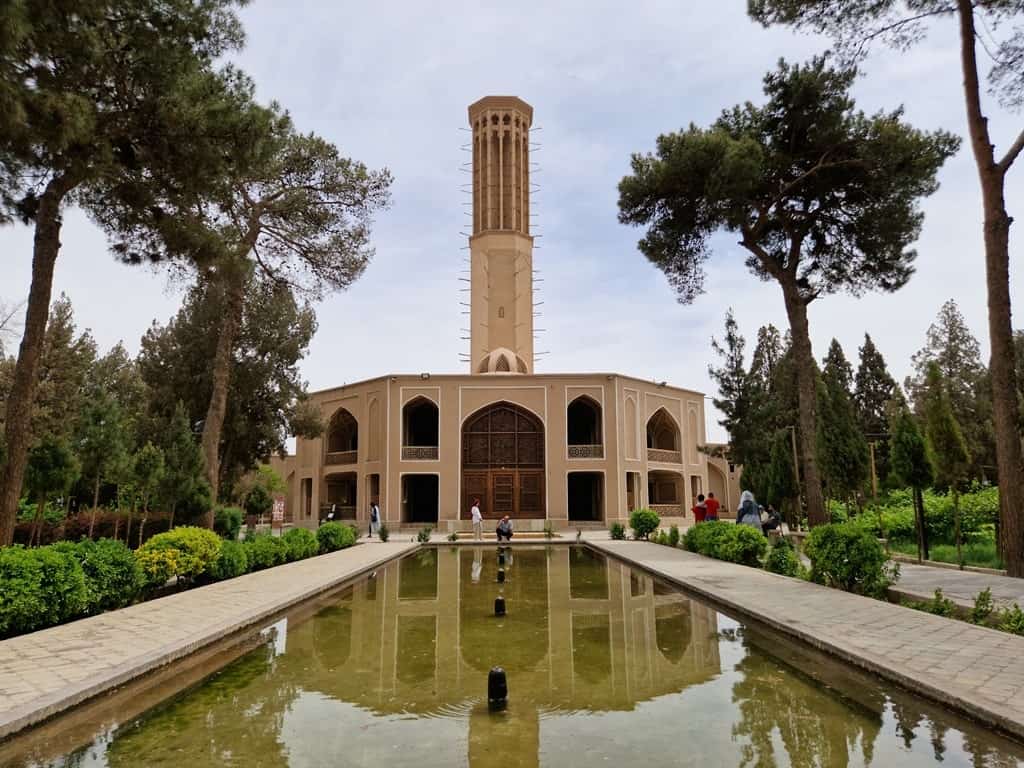
Built around 1750, these UNESCO-listed gardens are a veritable oasis in the otherwise bustling metropolis. Created by Muhammad Tagi Khan Bafqi, who took over the ruling of Yazd following the death of Shah Nader Afshar (founder of the Afsharid dynasty), it’s on these exquisite grounds that the new ruler constructed his residence and seat of government.
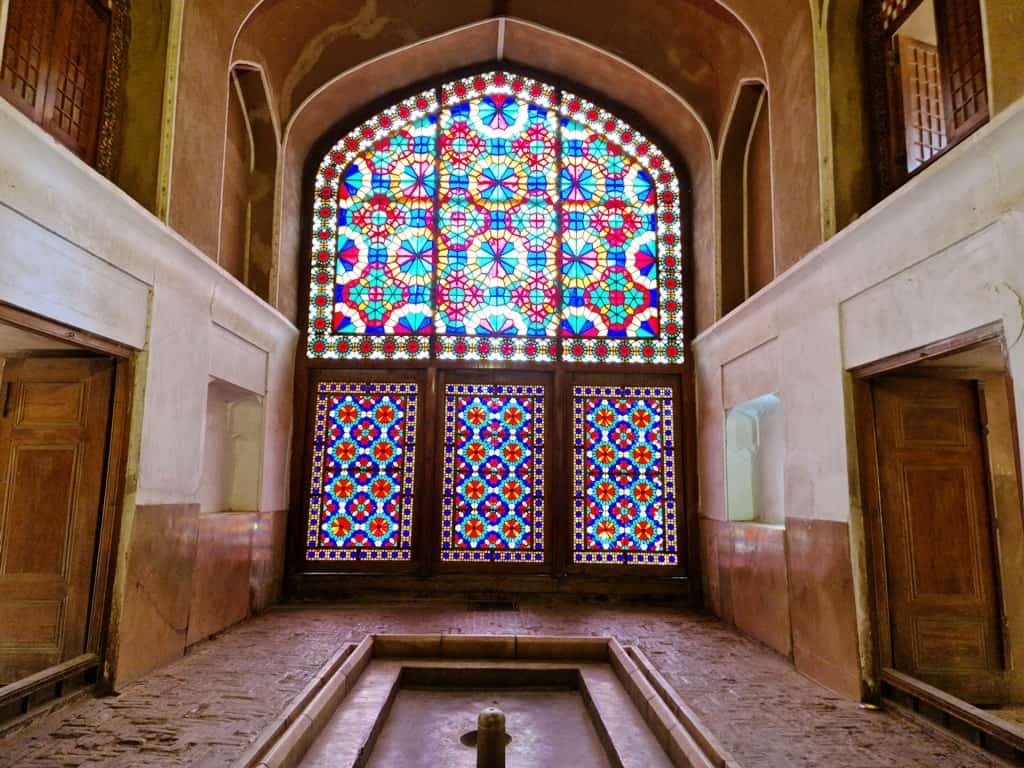
Today this tranquil green space, laid out according to the ideals of symmetrical Persian design, has been carefully maintained to provide a peaceful place to explore. It’s planted with pomegranates and orange groves and shaded by evergreens; at its center is the pavilion, a polygonal structure complete with a 33-meter-tall badgir.
Alexander Prison
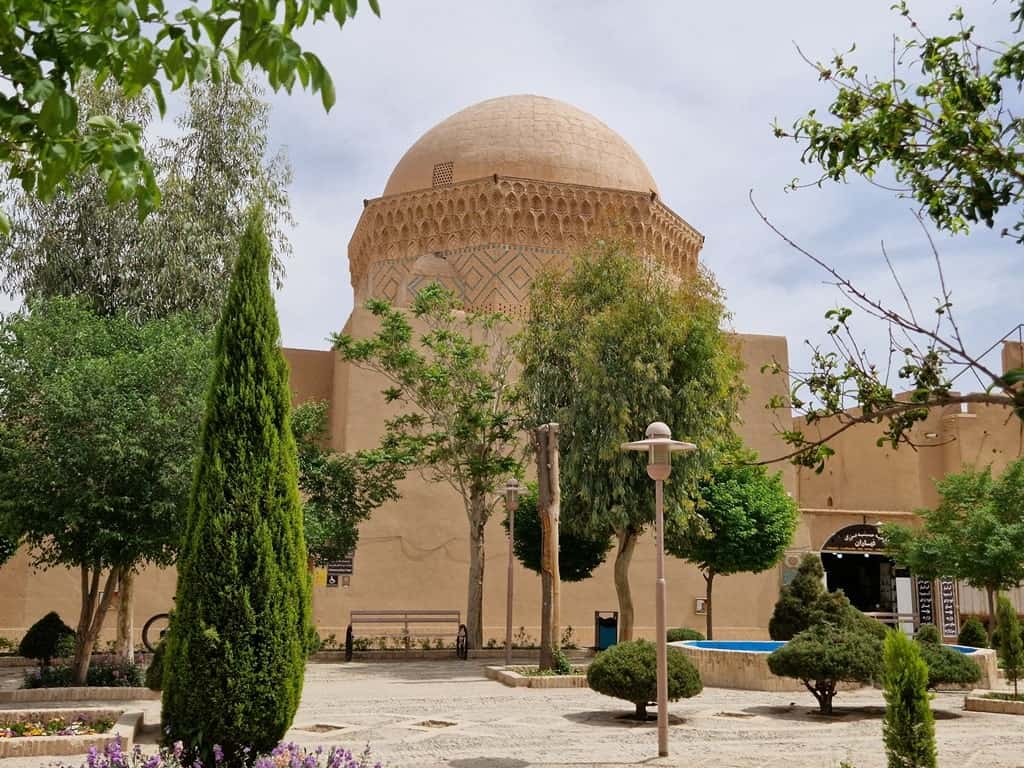
This 15th-century school turned prison, and now a tourist attraction, has some legends attached to it. Namely, it’s the well in its courtyard that is said to have connections to Alexander the Great, but whether or not it was commissioned by the Greek King of Macedonia and Persia himself is dubious.
The building itself is an attractive space without the myth, plus the space is now home to a number of interesting craft workshops to spend time exploring.
Yazd Khan Bazaar
The 19th-century Khan Bazaar is a mud-brick and plaster market boasting dozens of stalls and traditional stores to intrigue visitors. It’s the sort of place where you can spend hours wandering, exploring the various narrow lanes of the bazaar.
There are two main thoroughfares, one known as the Main Line and the other as the Copper Line, from which an expanse of various side streets house hammams, mosques, and madrasas. Stop off for a cup of tea at one of the stands and soak up the buzz of shoppers enjoying an afternoon of browsing and buying.
Yazd Water Museum
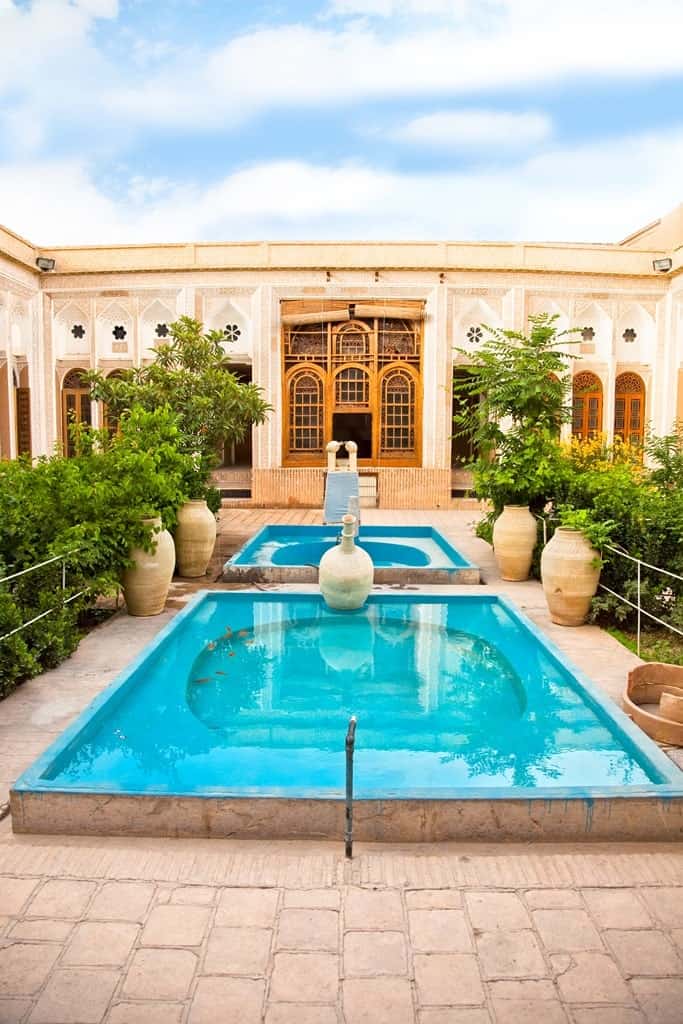
Situated in a restored mansion, Yazd Water Museum showcases 2,000 years of irrigation throughout the history of Iran. The museum’s informative displays use architectural designs, models, exhibits of historical artifacts, and photography to give visitors an insight into how this big city has been able to flourish in the desert — namely, by harnessing the power of water through technological feats of engineering.
Rooftop cafes of Yazd
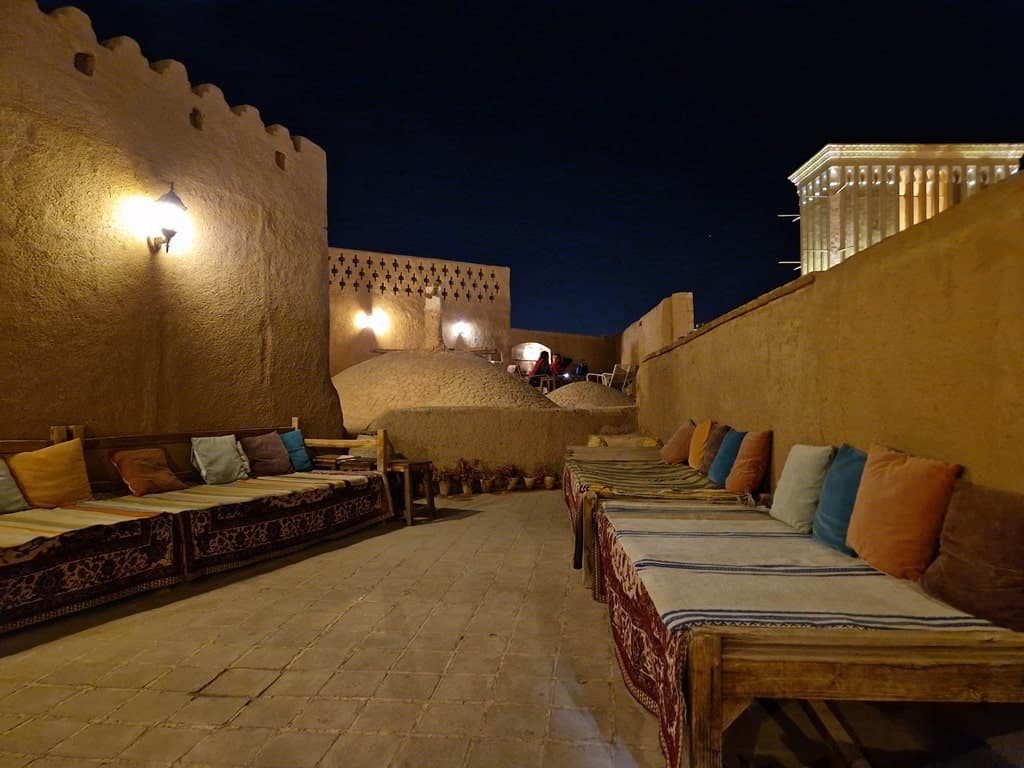
When the time comes to take a break from all the sightseeing, there’s no better place to head than to one of Yazd’s many rooftop cafes. In the summer, these cooling spots allow you to sit back and soak up the scenery below, while in winter, they’re warmed by heaters for a cozy place to while away an hour or so. Each cafe is different, each having its own specialties and even themes, and also boasting different views of the city.
Markar Square
The central Markar Square is most famous as the location of the Markar Clock Tower. Also known as Borj-e Sa’at-e Markar, this fabled square tower sits at a height of around 4 meters. Incredibly, the clock tower is situated at the geographical coordinates of the very center of Iran.
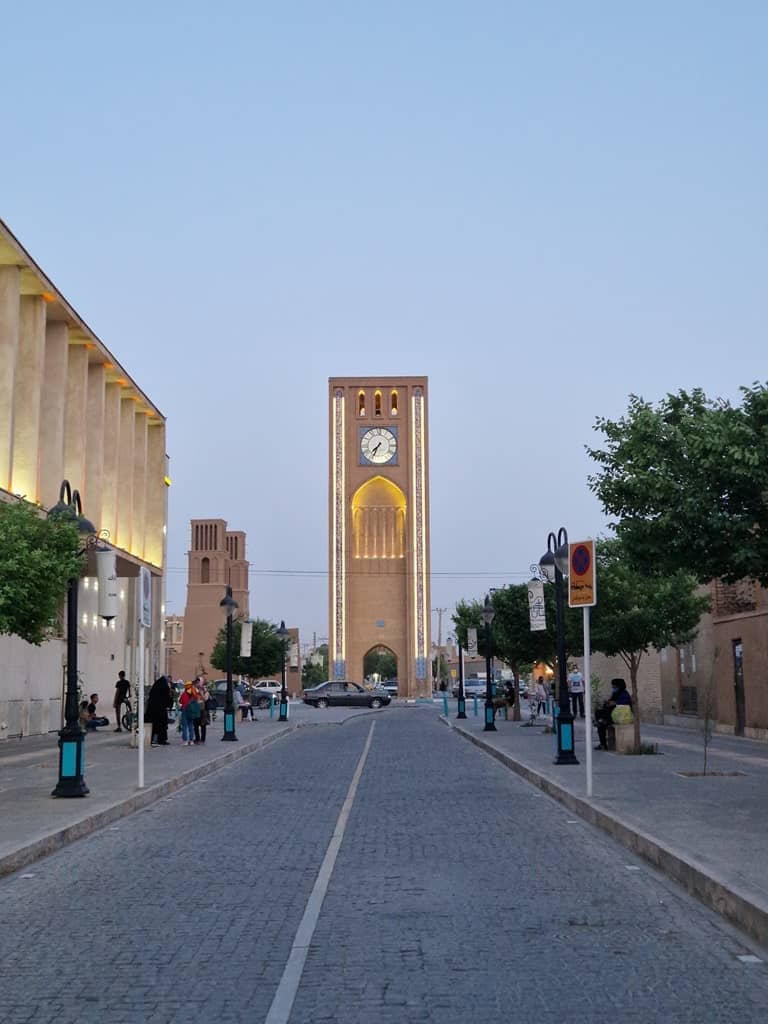
The clock tower was built in 1942 using mechanisms from London; the clock has to be wound once every week to continue working. The design of the clock itself is a good example of Qajar architecture and is inscribed with a number of poetry verses by local writer Nasser and verses from the Quran.
Things to Do Near Yazd
Nain
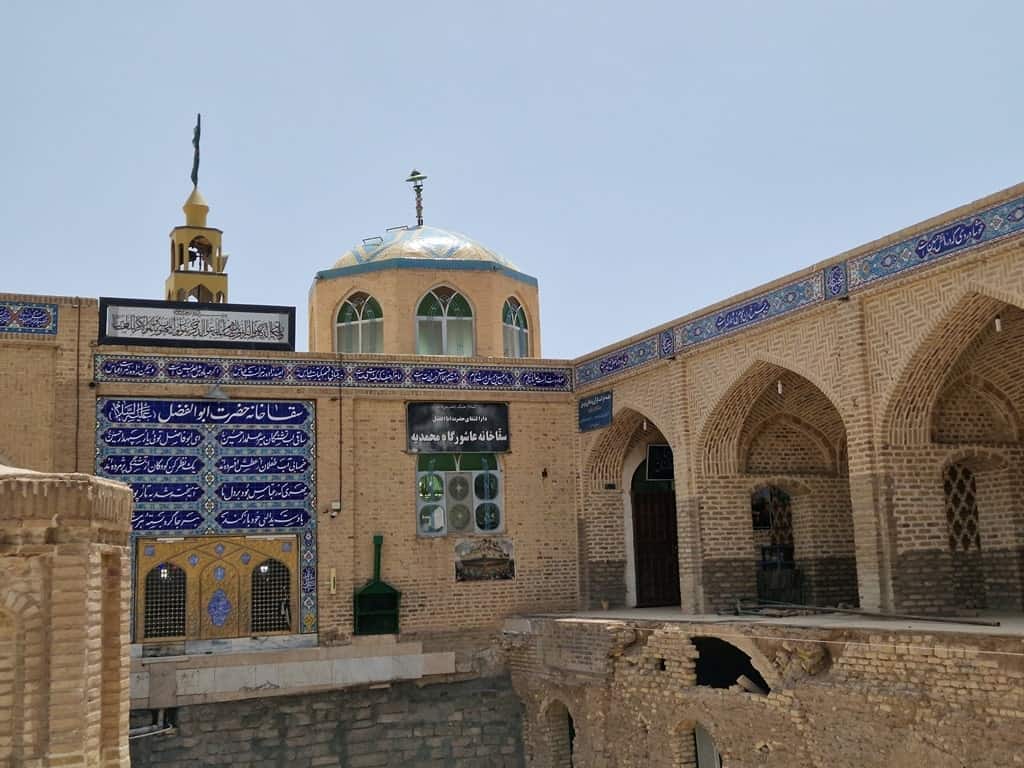
The city of Nain lies halfway between Yazd and the Iranian capital, Tehran. The capital of the county of the same name, Nain, is known for its stunning collection of monuments.
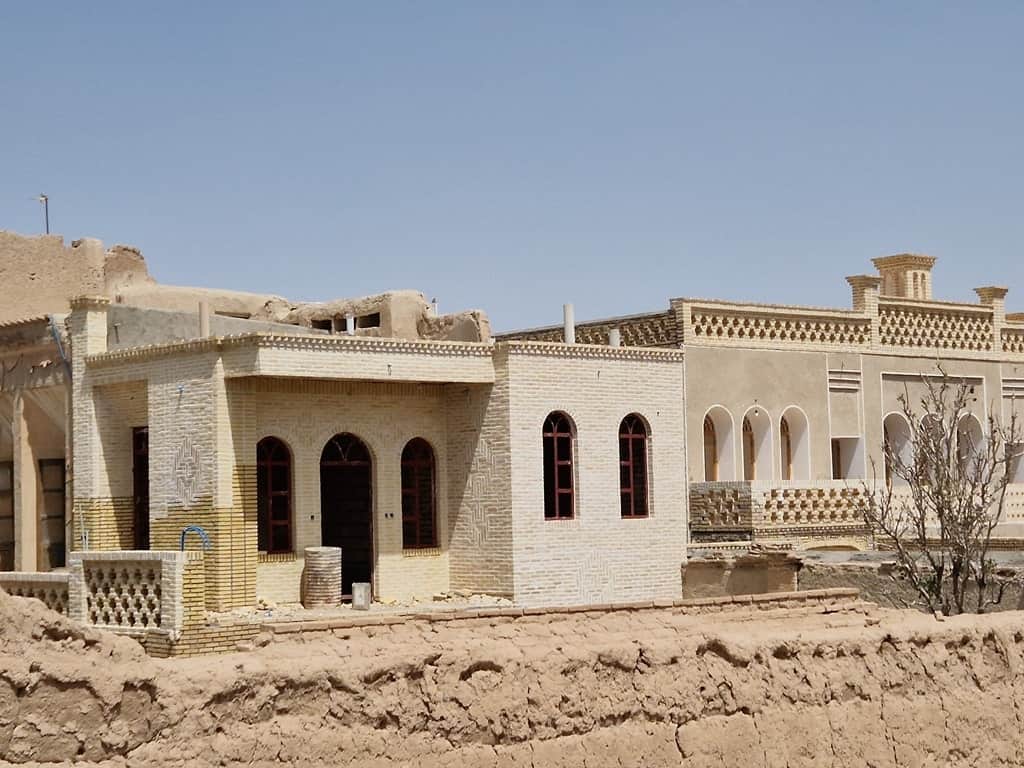
Namely, these include the Jameh Mosque, one of the four oldest mosques in Iran, and a watermill powered by qanats (underground tunnels used to supply the city with water), further showcasing Persian ingenuity in the realm of controlling the element of water.
Meybod
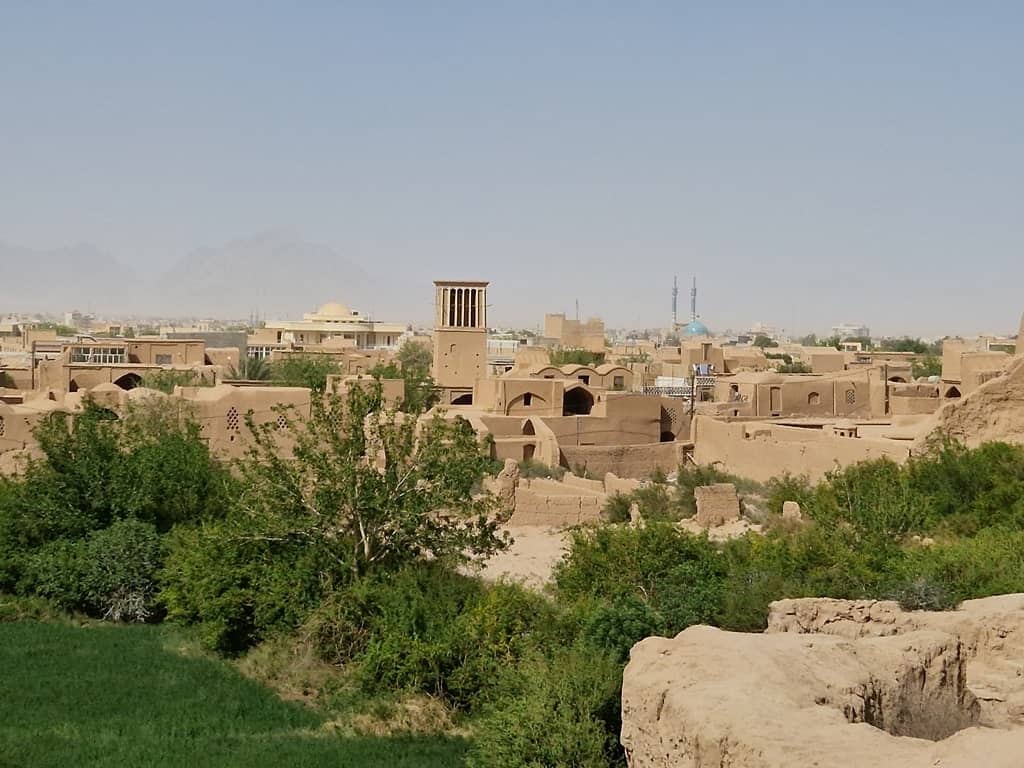
The capital of Meybod County, this compact desert city lies a stone’s throw from Yazd, making for an easy day trip. One of the most fascinating sights here is the Meybod Yakhchal, a 400-year-old icehouse with walls two meters thick to stop the desert sun from melting the ice within.
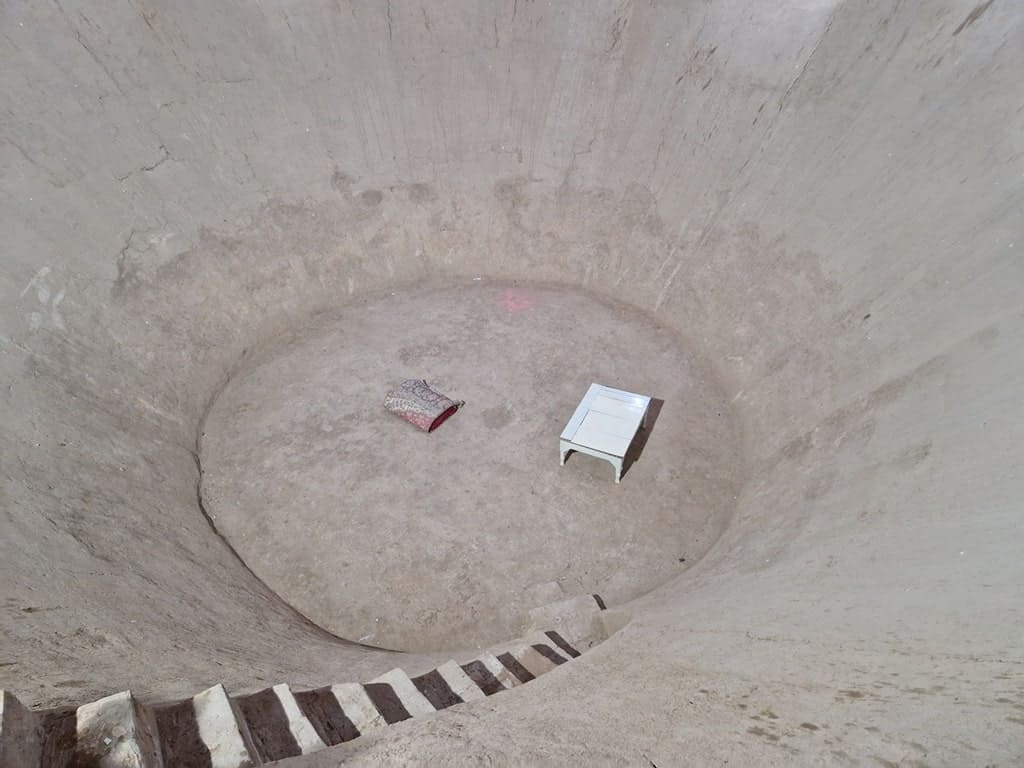
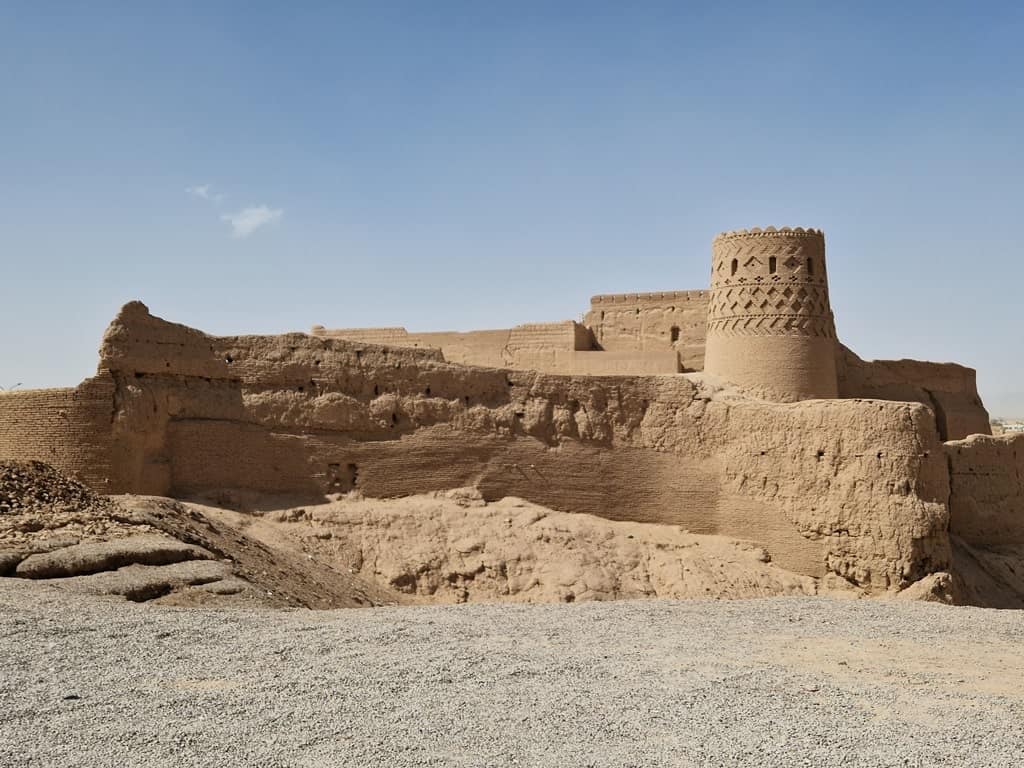
This thickness tapers to the top, however, which ingeniously allows rising hot air to escape. There’s also Narin Castle, an impressive Sassanid-era fortress built atop a settlement that is thought to date to around 4,000 BC.
Fahraj
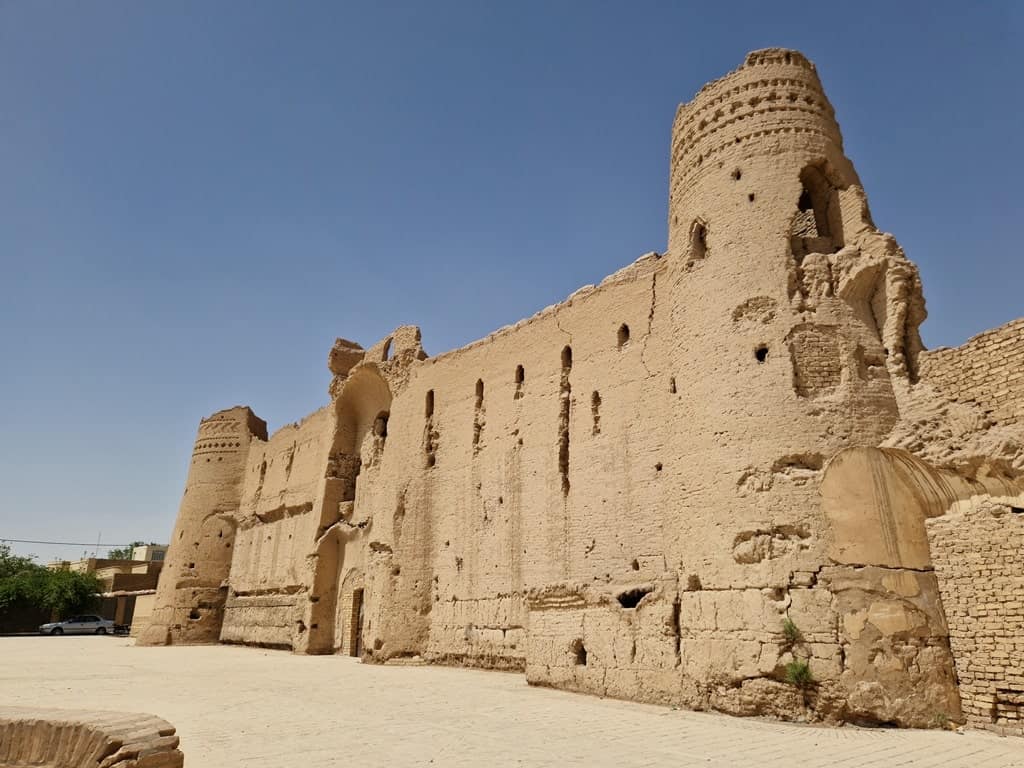
Around 30 kilometers southeast of Yazd lies the town of Fahraj. However, known for its fierce (and bloody) resistance to conversion during the Muslim conquest of Iran.
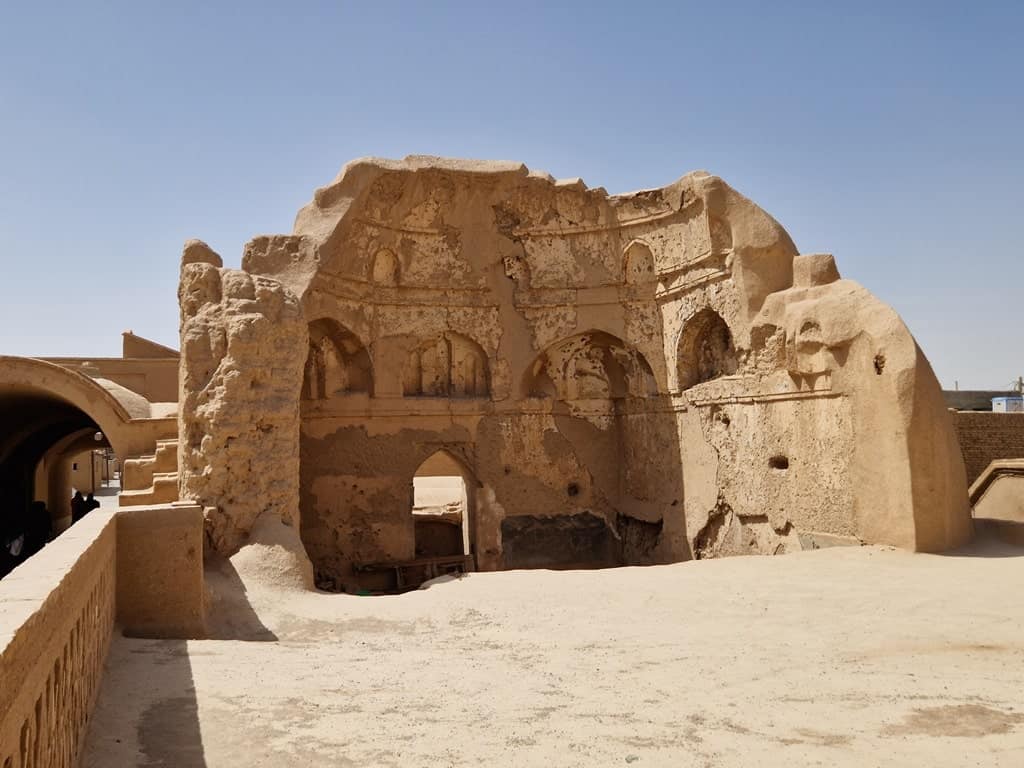
Today it’s home to a mosque that dates to the Sassanid Empire; this mosque features a nifty newer addition, too — a minaret built four centuries ago that once functioned as a lighthouse for caravans.
Saryazd Fortress
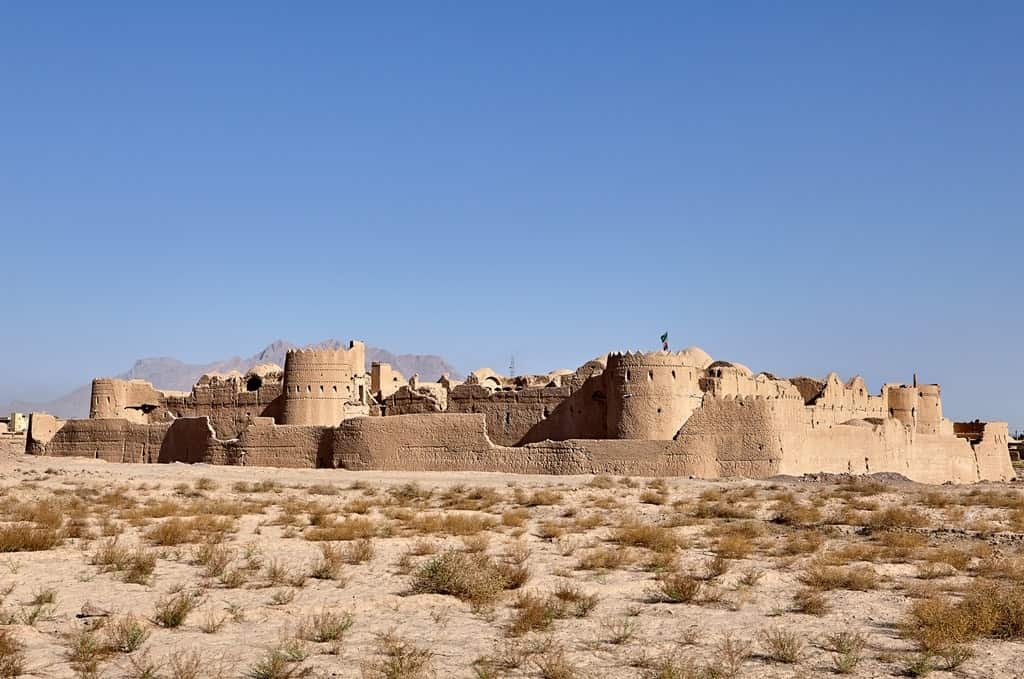
Dating to between the 3rd and 7th centuries of Iran’s Sassanid Empire, this imposing fortress once meant business: it features numerous towers, outer and inner walls, a moat, and a confusing selection of 480 rooms for invaders to have to search. The castle is explorable today, but the best thing about the Saryazd Fortress is getting onto the roof; sunset is particularly sought after at this destination.
FAQ About Yazd
As well as its ingenious irrigation and water supply solutions in the form of qanats, Yazd is known for being an important stop along the Silk Road, being at something of a crossroads of trading routes between India and Central Asia.
Known for its silk production, the city was also, for a long time, allowed to remain Zoroastrian, and for that reason, it’s famed for being the last outpost of the native Persian religion. It’s also nicknamed Shahr-e Badgirha (“City of Windcatchers”) due to the many badgir in the city.
Though cited as the oldest earthen-built city in the world and sometimes one of the oldest cities in the world, archaeological evidence found at Yazd dates the earliest settlement here to the Achaemenid Empire (550-330 BC). But that is based on discoveries made 13 kilometers north of the city.
First-century Roman historian Pliny the Elder mentions in his Natural History a town in the Parthian Empire called “Issatis,” from which the name “Yazd” possibly derives. The site on which Yazd is currently situated, however, dates to the Sassanid Empire, making the city itself, at the most, around 1,800 years old.
